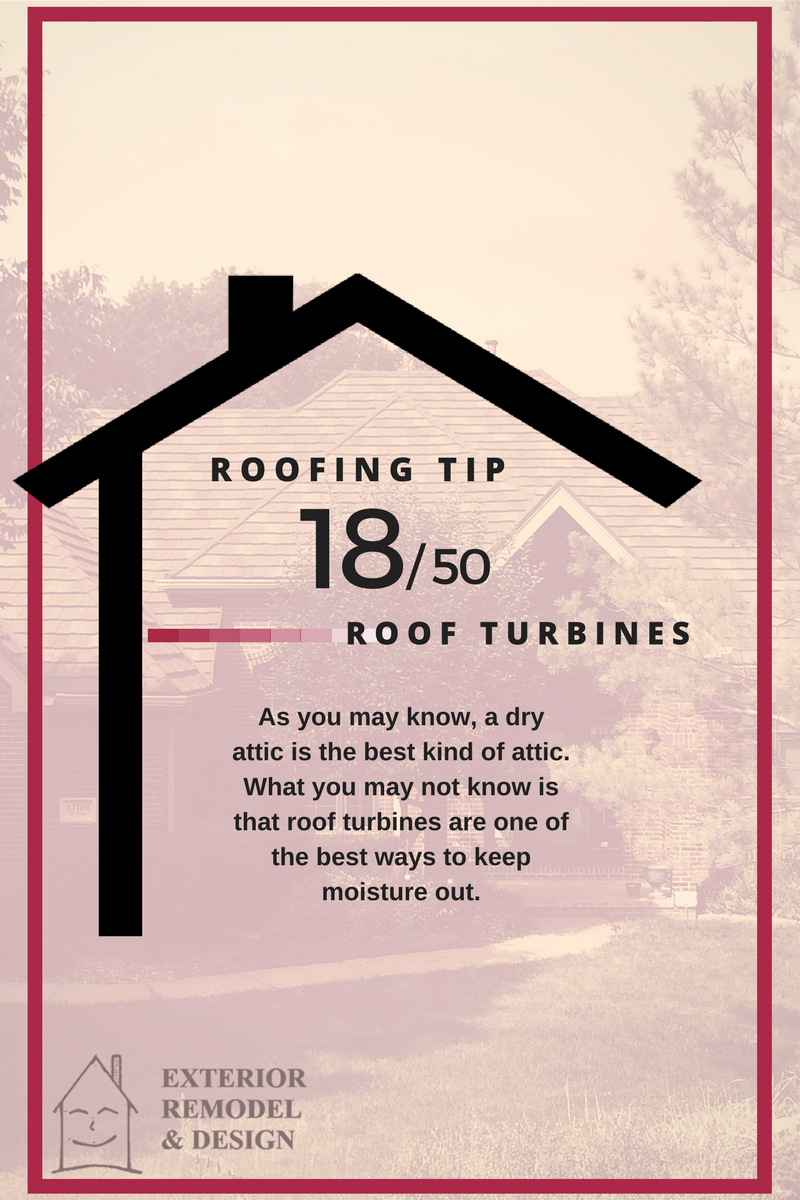Don’t have a roof turbine, or don’t know much about it? Here’s all you need to know about this essential tool for your roof.
During the cold, winter months warm air rises to the attic. Without proper ventilation, the extra moisture in the air can create problems like mold, mildew, wood rot and even ice dams on the exterior of your home. In winter months roof turbines remove the excess heat and moisture from your attic and can prevent major damages to your roof. In the hot summer months warm air rises to the attic. During these months roof turbines are designed to remove the heat from the attic and help keep your entire home cooler.
MAINTENANCE/CARE
Some roof turbines have ball bearings that need maintained and lubricated every once in a while. You can take care of this with applying a little WD-40 to the areas. If you don’t want to deal with the hassle of getting up on the roof and having to do this, consider models that have enclosed, self-lubricating bearings for less maintenance. Rust can also become a problem for some roof turbine models. To prevent rust, look for aluminum roof turbines. Aluminum ones are mainly rust resistant.
BENEFITS
Roof turbines are long-lasting, especially ones that don’t require additional maintenance, so you won’t have to keep replacing them often. They’re also much more cost-efficient than having to deal with costly roof repairs and damages to your roof and attic.
INSTALLATION
This is something you can actually do yourself, if you feel so inclined, as there are plenty of DIY tutorials on how to install a roof turbine vent. Simply remove the shingles around the area in which your turbine will go, add a hole for ventilation, attach the turbine to the roof and apply sealant and/or flashing to prevent leaks.
If you don’t feel comfortable doing it yourself, Exterior Remodel & Design will gladly. and inexpensively, help you.

